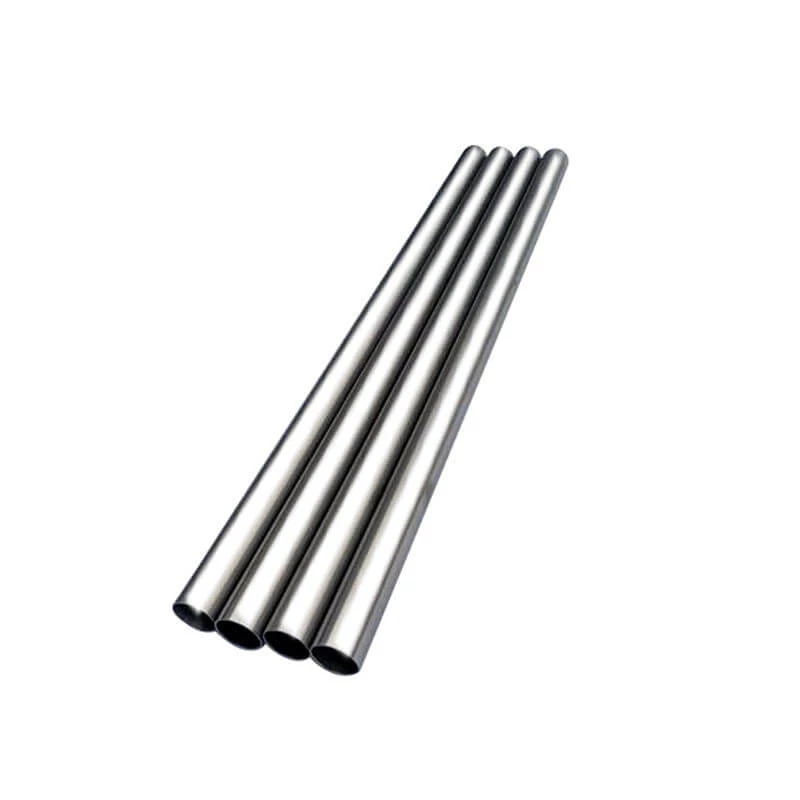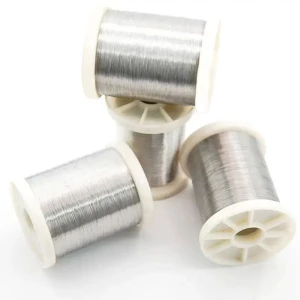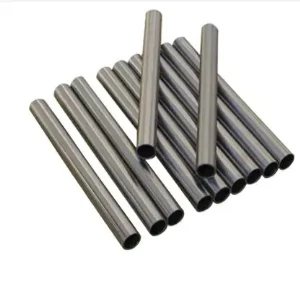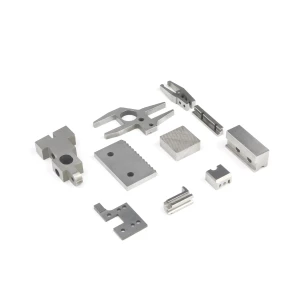Introduction to zirconium alloy:
The zirconium alloy is a solid solution of zirconium or other metals. Zirconium has a very low thermal neutron absorption cross section, high hardness, ductility and corrosion resistance. The main use of zirconium alloys is in the field of nuclear technology, such as fuel rods in nuclear reactors. Typical compositions of nuclear grade zirconium alloys are more than 95% zirconium and less than 2% tin, antimony, iron, chromium, nickel and other metals added to improve mechanical properties and corrosion resistance.
Zirconium alloy has good corrosion resistance, moderate mechanical properties and low atomic thermal neutron absorption cross section (Zirconium is 0.18 target) in high temperature and high pressure water and steam at 300-400 °C. It has good compatibility with nuclear fuel. It can be used as a core structural material for water-cooled nuclear reactors (fuel cladding, pressure pipes, supports and tunnel pipes), which is the main use of zirconium alloys. Zirconium has excellent corrosion resistance to various acids (such as hydrochloric acid, nitric acid, sulfuric acid, and acetic acid), alkalis, and salts, so zirconium alloys are also used to make corrosion resistant parts and pharmaceutical devices. Zirconium has a strong affinity with gases such as oxygen and nitrogen, so zirconium and zirconium alloys are also widely used as non-evaporable getters in the electric vacuum and bulb industries (see getter materials). Zirconium has excellent luminescent properties and is therefore a flash and pyrotechnic material.
Types of zirconium alloys:
There are two series of zirconium-based alloys produced on an industrial scale: zirconium tin and zirconium. The former is represented by Zr-2 alloy, and the latter is represented by Zr-2.5Nb alloy. The composition and properties of zirconium and three zirconium alloys are shown in the table. The principle of alloying element selection of zirconium is: one can not significantly increase the thermal neutron absorption cross section of zirconium; the second is to improve the corrosion resistance and strength of zirconium without excessively impairing the process performance. In the zirconium-tin alloy, the comprehensive addition of tin, iron, chromium and nickel (Zr-2 alloy) can improve the strength and corrosion resistance of the material, the thermal conductivity of the corrosion-resistant film, and reduce the sensitivity of the surface state to corrosion; Zr-4 alloy does not contain nickel, and the iron content is appropriately increased. The corrosion absorption of this alloy is only about half of that of Zr-2 alloy. Usually Zr-2 alloy is used in boiling water reactors and Zr-4 alloy is used in pressurized water reactors. In the zirconium-lanthanum alloy, the corrosion resistance of the alloy is best when the amount of niobium added reaches the solid solution limit of α-Zr at the use temperature. The niobium content in the Zr-1Nb and Zr-2.5Nb alloys is higher than the solid solution limit at the use temperature. The excess enthalpy is present in the α-Zr in a supersaturated state, which is detrimental to the corrosion resistance of the alloy, but is much better in the form of the second phase β-Nb. Most of the metal impurity elements in zirconium and zirconium alloys are required to be below 50 ppm, and elements with large thermal neutron absorption cross sections (such as boron and cadmium) should not exceed 0.5 ppm; nitrogen with severe damage to corrosion resistance should not exceed 80 ppm; The strengthening effect, the content of which is generally 800 to 1600 ppm depending on the strength requirement..
| Grade | R60702, R60704, R60705 |
| Standard | ASTM B523, ASTM B353, ASTM B658 |
| Size | OD(0.5-200)mm*WT(0.1-20)mm*L(MAX 20000)mm |
| Shape | Round, Square |
| Surface | Polished or According To Customer's Requirement |
| Processing | Hot Rolling, Cold Rolling, Drawing, Extruded |
Zirconium Pipe (Zirconium Tube) are delivered in straight lengths or as U-bent pipe, ZHUO HANG XIN also supply zirconium complementary products for heat exchanger applications. Zirconium spiral pipe, zirconium capillary pipe are available by requirement.
Applications:
Zirconium Pipe (Zirconium Tube) is extremely corrosion-resistant due to the formation of a stable oxide film and is unaffected by acids (with the exception of HF) and alkalis. As a result of its corrosion resistance, Zirconium pipe/tube is widely used in the chemical industry where corrosive agents are used. Also, due to its excellent high temperature properties, coupled with its low neutron absorption, it is used in the construction of nuclear reactors. The pure metal is also used as a lining in jet engines.
Chemical Composition
Grade
Element composition (%) <
Zr+Hf
Hf
Fe+Cr
Sn
H
N
C
Nb
O
R60702
99.2
4.5
0.2
--
0.005
0.025
0.05
--
0.16
R60703
98
4.5
--
--
0.005
0.025
--
--
--
R60704
97.5
4.5
0.20~0.40
1.0~2.0
0.005
0.025
0.05
--
0.18
R60705
95.5
4.5
0.2
--
0.005
0.025
0.05
2.0~3.0
0.18
R60706
95.5
4.5
0.2
--
0.005
0.025
0.05
2.0~3.0
0.16
Mechanical Properties
Material
State
Rm (≥)/MPa
Rp0.2 (≥)/MPa
A50mm (≥)/%
Zirconium 702
Annealed
379
207
16
(UNS R60702)
Zirconium 704
Annealed
413
241
14
(UNS R60704)
Zirconium 705
Annealed
552
379
16
(UNS R60705)
Test:
100% Ultrasonic Test (UT)
100% Eddy Current Test(ET)
100% Pneumatic Test
100% Hydraulic Test
Microstructure Test
Visual Surface Inspection
Dimensional Inspection
Tensile Properties Inspection
We have more categories for you. lf you can't find the products you want above,just fill in the form and tell us whatproducts you want to import from China.
















